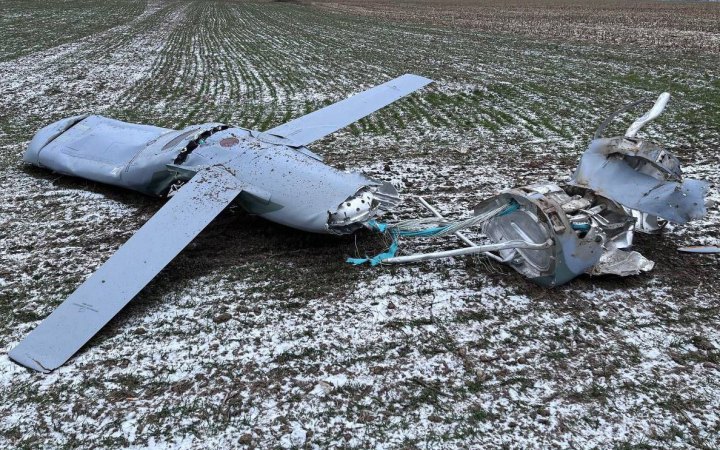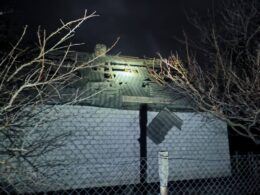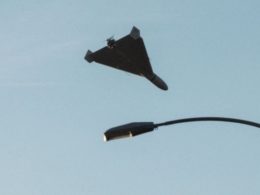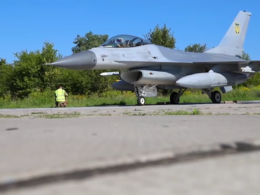Ukraine intercepted 81 out of 93 Russian missiles during a massive attack targeting energy infrastructure across the country on 13 December, President Volodymyr Zelenskyy reported, calling it one of the largest strikes against Ukraine's energy system. The attack also involved approximately 200 explosive drones. Later, the Air Force updated the figures, saying the air defenders have taken down 81/94 missiles, 80/193 drones, with 105 other UAVs crashing, and 5 more turning to Russia and Belarus.
Update: Kharkiv Oblast Head Oleh Syniehubov reported this morning that Russians struck Myrne village, injuring four people at a civilian enterprise.
According to Zelenskyy, the assault included at least one North Korean missile, with F-16 fighters successfully downing 11 cruise missiles.
"This is Putin's 'peace' plan - to destroy everything. This is how he wants 'negotiations' - by terrorizing millions of people," Zelenskyy wrote on Telegram. "He is not limited in either range or in purchasing necessary components for missile production. Oil gives Putin enough money to believe in impunity," he wrote, adding that "We need a strong reaction from the world: a massive attack needs a massive reaction. This is the only way to stop terror."
Ukrainian Energy Minister Herman Halushchenko confirmed that energy facilities nationwide were under massive attack, stating that energy workers were taking necessary measures to minimize negative impacts on the power system. Ukraine's power operator Ukrenergo reported an increase in power consumption restrictions due to the massive missile attack on energy facilities.
The IAEA, the UN's nuclear power watchdog, reported that five of Ukraine’s nine operating nuclear reactor units "have reduced power output due to renewed attacks on energy infrastructure," failing to mention Russia as a culprit of the attack.
According to Monitor, a Ukrainian airspace monitoring channel, Russia deployed multiple missile and drone types including:
- Kh-101/55 cruise missiles launched by Tu-95MS bombers from the Caspian Sea,
- 3M14 Kalibr cruise missiles launched by the Russian Navy from the Novorossiysk area, 9M723 Iskander-M ballistic missiles from Belgorod Oblast,
- Kh-59/69 cruise missiles,
- Kh-47M2 Kinzhal air-launched ballistic missiles,
- Shahed UAVs, and false target drones like Gerbera.
Air Force's update
After Zelenskyy's report, the Ukrainian Air Force updated on the Russian air assault, saying that the combined drone and missile attack lasted 20 hours, from 14:00 on 12 December until 10:00 today. The attack "once again" mainly targeted Ukraine's energy facilities.
During this period, the Air Force's radio-technical troops detected 287 enemy aerial threats, including 94 missiles and 193 UAVs, specifically:
- 4 Kh-47M2 Kinzhal aeroballistic missiles launched by MiG-31K fighters from Tambov Oblast;
- 2 Iskander-M ballistic missiles launched from Bryansk Oblast and Russian-occupied Crimea;
- 1 KN-23 ballistic missile launched from Bryansk Oblast;
- 55 Kh-101 and Kh-55SM cruise missiles launched by Tu-95MS bombers from Volgograd Oblast;
- 24 Kalibr cruise missiles launched from the Black Sea;
- 7 Iskander-K cruise missiles launched from Voronezh and Rostov Oblasts;
- 1 Kh-59/Kh-69 guided missile launched from airspace over Russian-occupied Luhansk Oblast;
- 193 strike UAVs, including Shahed drones and unidentified types, launched from Kursk, Primorsko-Akhtarsk, Oryol, Bryansk, and Millerovo in Russia.
The Air Force says the aerial attack was countered by anti-aircraft missile troops, aviation, electronic warfare units, mobile fire groups, and notably, highly effective F-16s. The air defenders reportedly shot down the following aerial targets:
- 80 Kh-101/Kh-55SM/Kalibr/Iskander-K cruise missiles;
- 1 Iskander-M ballistic missile;
- 80 Shahed and unidentified strike UAVs.
Additionally, 105 enemy drones failed to reach their targets due to active Defense Forces countermeasures, five returned to Russia, and one to Belarus, the Air Force says.
The Air Force's figures suggest that at least three drones and 13 missiles might have reacjed their targets.
Affected regions
Public broadcaster Suspilne reported explosions in multiple regions, including Odesa, Kyiv, Khmelnytskyi, and Ivano-Frankivsk oblasts. In Kharkiv Oblast's Myrne, at least four people were injured at a civilian enterprise, regional authorities said.
Ivano-Frankivsk Oblast chief Svitlana Onyshchuk reported that Prykarpattia (a historic name for Ivano-Frankivsk Oblast) endured its largest Russian attack since the full-scale war began, with drones and missiles targeting critical infrastructure while air defenses responded. Ivano-Frankivsk Mayor Martsinkiv said missile debris fell in one of the local community's villages, though no injuries were reported.
One Kinzhal missile targeted Starokostiantyniv in Khmelnytskyi Oblast, which hosts a bomber air base, airspace monitoring channels reported. Previous Russian Kinzhal and drone attacks hadn't caused significant damage there.
The missile attack lasted 2 hours and 39 minutes, from 07:18 to 09:57, while the UAV attack continued for 11 hours and 4 minutes, from 17:56 to 05:00, according to Raketa UA monitoring channel.
Follow-up:
Morning Russian missile attack hit power facilities in two western Ukraine’s regions
Related:
- UN nuclear watchdog board condemns Russian attacks on Ukraine’s energy grid, failing to mention Russia
- Russian drone targets IAEA vehicle near occupied Zaporizhzhia nuclear facility
- Ukraine lacks weapons for its F-16s against Russian Su-34 bombers, air expert says
- Russia’s 74 drones fail to reach targets in Ukraine; other attacks kill 13, injure dozens of others





